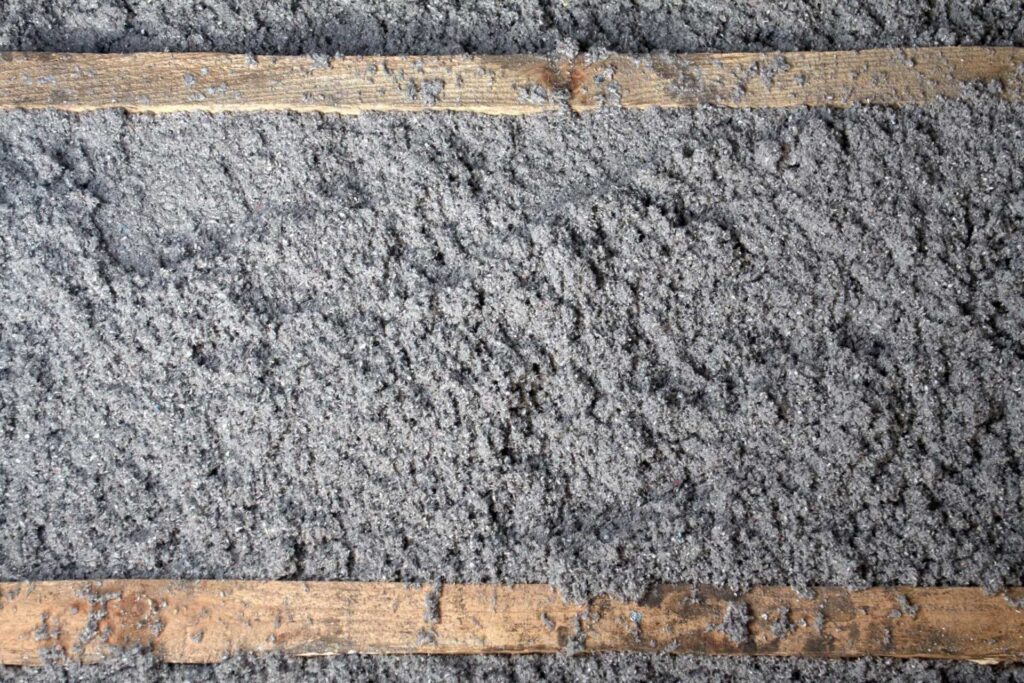
Contents
You might think blow-in insulation is too complicated to tackle yourself, but with the right techniques, it’s quite manageable. By following a few key steps, you can enhance your home’s energy efficiency and comfort without hiring a professional. From selecting the right materials to ensuring even coverage, each technique plays a crucial role in the effectiveness of your insulation project. Curious about how to start this process and what tools you’ll need? Let’s explore the essential methods that can make your DIY insulation project successful.
Key Takeaways
- Measure and prepare the workspace by removing obstacles and protecting surfaces with tarps to facilitate the smooth installation of blow-in insulation.
- Select the appropriate insulation material, such as cellulose for energy efficiency or fiberglass for moisture resistance, based on your climate and needs.
- Use safety gear, including goggles, masks, and gloves, to protect yourself from airborne particles and skin irritation during the installation process.
- Operate the blow-in machine properly, ensuring it is positioned for optimal reach, and apply insulation evenly in layers to avoid gaps.
- Conduct a post-installation inspection using a visual checklist and thermal imaging to identify and address any coverage issues or energy loss.
Choosing the Right Materials
When selecting materials for your DIY blow-in insulation project, you’ll want to focus on factors like R-value, material type, and installation ease. The R-value measures insulation effectiveness, with higher numbers indicating better thermal resistance. For most homes, an R-value of at least 38 is recommended for attics and around 25 for walls.
You’ll find two popular insulation types: fiberglass options and cellulose alternatives. Fiberglass insulation is a common choice due to its affordability and widespread availability. It’s lightweight, easy to install, and resists moisture, making it ideal for various climates. However, you’ll need to wear protective gear while handling it to avoid skin irritation.
On the other hand, cellulose insulation is made from recycled paper products and offers a more eco-friendly alternative. With a higher R-value per inch than fiberglass, it can provide superior insulation, but it may require professional installation if you’re not comfortable with the equipment. Cellulose also has excellent sound-dampening qualities, which can make your home quieter.
Consider your home’s specific needs when making your choice. For example, if you’re in a damp area, fiberglass may serve you better. But if you’re environmentally conscious and want to reduce your carbon footprint, cellulose could be the way to go.
Ultimately, understanding your options will help you create a comfortable, energy-efficient space that feels like home.
Preparing Your Space
Before diving into your blow-in insulation project, it’s crucial to prepare your space properly to ensure a smooth installation process. Start by organizing your space. Clear out any furniture, boxes, or items that might obstruct your work area. This will give you the room to maneuver and access all areas that need insulation.
Consider using a large tarp or plastic sheeting to protect your floors and walls from any debris created during the project.
Next, take accurate room measurements. Knowing the dimensions of the areas you plan to insulate will help you calculate how much insulation material you’ll need. Measure the length and width of the rooms, and don’t forget to account for any nooks or crannies that could benefit from insulation.
This attention to detail will save you time and money, ensuring you buy just the right amount of insulation.
Also, assess your attic or crawl space access points. Make sure they’re easily reachable and free from clutter. If you need to use a ladder, ensure it’s stable and positioned correctly before climbing.
Lastly, check your safety equipment: goggles, gloves, and a mask are essential to protect you from dust and particles when blowing in the insulation.
Using a Blow-In Machine
With your space prepared and all measurements taken, it’s time to get familiar with the blow-in machine that will make your insulation project efficient and effective. This machine is essential for applying various insulation types, such as cellulose, fiberglass, or mineral wool. Each type offers unique benefits, so choose one that best fits your needs.
Start by setting up the blow-in machine in a position where the hose can easily reach all areas you want to insulate. Ensure that the machine is plugged in or has a charged battery, depending on the model. Familiarize yourself with the controls, which typically include an on/off switch and a dial for adjusting the flow of insulation material.
Next, prepare the insulation material by loading it into the machine’s hopper. Follow the manufacturer’s instructions for the specific insulation type you’re using, as different materials may require different handling techniques.
As you work, remember to apply the insulation in layers using proper blow-in techniques. This will help you achieve an even distribution, avoiding gaps or uneven areas that can compromise your insulation’s effectiveness.
When you’re ready to start blowing in the insulation, position the hose in the area you’re insulating. Keep a steady pace and move the hose around to ensure complete coverage.
Take your time to monitor the density of the insulation; it should feel firm but not overly packed. By mastering the blow-in machine and its techniques, you’ll create a cozy, energy-efficient home.
Proper Safety Gear
Although insulation projects can be rewarding, ensuring your safety during the process is crucial. When you’re ready to tackle blow-in insulation, you need to gear up properly to protect yourself from potential hazards.
First and foremost, get a pair of quality safety goggles. These will shield your eyes from any airborne particles, insulation fibers, or dust that might irritate your eyes. You don’t want to compromise your vision while trying to create a cozy home environment.
Next, invest in a reliable dust mask or respirator. As you work with insulation materials, fine particles can become airborne, and inhaling them can pose health risks. A dust mask will help filter out those particles, allowing you to breathe easier and work with confidence. Make sure the mask fits snugly over your nose and mouth for maximum protection.
Additionally, consider wearing gloves and long sleeves to protect your skin from irritation. Insulation materials can cause rashes or discomfort, especially if you come into contact with them for extended periods.
Wearing old clothing, along with boots or sturdy shoes, can also provide extra protection against any sharp edges or debris in your workspace.
Preparing with the right safety gear keeps you safe and gives you peace of mind, allowing you to focus on the rewarding aspects of your insulation project.
Filling Gaps and Voids
When it comes to blow-in insulation, filling gaps and voids is essential for maximizing energy efficiency and comfort in your home. You mightn’t realize it, but even the smallest gaps can lead to significant energy loss.
Start by inspecting areas like windows, doors, and electrical outlets. Use gap-sealing materials, such as caulk, to close these openings before applying your blow-in insulation. This step ensures that the insulation performs at its best by preventing drafts and maintaining temperature control.
Once you’ve sealed the gaps, focus on void filling in places like attics and crawl spaces. These areas often harbor hidden spaces that can compromise your insulation efforts. Make sure you fill any voids in walls, around pipes, and between joists with your blow-in insulation. This process enhances your home’s thermal envelope and helps reduce noise transmission between rooms.
As you work, keep in mind that achieving a snug fit is critical. If you’re unsure about how much insulation to use, consult local building codes or guidelines for optimal R-values for your region.
Ensuring Even Coverage
Achieving even coverage is crucial for the effectiveness of blow-in insulation, as uneven distribution can lead to cold spots and decreased energy efficiency. To ensure that you get the most out of your insulation project, you’ll want to implement some effective coverage techniques as you work.
Start by measuring the area you’re insulating to determine how much material you’ll need. Once you’ve got that down, consider using a few markers on the ceiling or walls to create a grid. This will help you visualize where you should apply the insulation, ensuring you hit every spot evenly.
As you begin blowing in the insulation, maintain a consistent distance from the surface, moving your nozzle in a slow, sweeping motion. This helps to create uniform insulation patterns throughout the area.
While applying the material, use a gentle, overlapping technique—think of it as painting a wall. This helps to avoid gaps and ensures that each layer bonds well with the others. Periodically stop to assess your progress. If you notice any uneven areas, you can touch them up right away.
Finally, don’t forget to pay attention to corners and edges, as these are often overlooked but can lead to significant energy loss. By following these guidelines, you’ll create a well-insulated space that enhances comfort and efficiency, making your home a cozy haven for you and your loved ones.
Post-Installation Inspection
Once you’ve installed your blow-in insulation, it’s crucial to conduct a thorough post-installation inspection.
Start with a visual inspection checklist to identify any areas that may need adjustment, ensuring you catch potential gaps or uneven layers.
Following that, using thermal imaging can help you assess the insulation’s effectiveness and pinpoint any cold spots that could lead to energy loss.
Visual Inspection Checklist
After completing your blow-in insulation project, conducting a thorough visual inspection is crucial to ensure everything was installed correctly.
Start by gathering your inspection tools, like a flashlight and a mirror, to help you check hard-to-reach areas.
Look for common issues, such as uneven coverage, which can lead to energy loss. Pay special attention to corners and edges, as these spots often get overlooked. If you notice any areas with insufficient insulation, you can add more as needed.
Next, check for signs of settling. Insulation should be evenly distributed; if you see any gaps or sagging areas, it’s a sign that the material may need to be topped off.
Don’t forget to inspect any pipes, vents, or electrical boxes. These areas should be properly sealed to prevent air leaks.
Finally, ensure that there are no obstructions blocking airflow, like debris or sagging insulation.
Thermal Imaging Assessment
How can you ensure your blow-in insulation is performing at its best? One effective method is to conduct a thermal imaging assessment after installation. This technique allows you to visualize areas where heat might be escaping, helping you gauge the thermal performance of your insulation.
To perform a thermal imaging assessment, you’ll need a thermal camera, which captures infrared radiation and highlights temperature differences.
After your insulation is installed, ideally during the colder months, walk around your home, focusing on walls, ceilings, and floors. Look for cold spots that indicate inadequate coverage or settling insulation.
Identifying these areas promptly can help you address any issues before they lead to significant energy loss.
Summary
By following these seven effective DIY blow-in insulation techniques, you can enhance your home’s energy efficiency and comfort. Imagine tackling a chilly winter with a well-insulated attic, reducing heating costs significantly. With a bit of preparation and attention to detail, you’ll create a cozy, energy-efficient space that feels just right year-round.
Recent Posts
Top Blow-In Insulation Options for Enhanced Energy Savings
Did you know that proper insulation can reduce your energy bills? When it comes to
5 Top Blow-In Insulation Types for Energy Savings
Did you know that your home’s energy can escape through inadequate insulation? Regarding blow-in insulation, you’ve
Why Invest in Professional Blow-In Attic Insulation?
When you consider the comfort and efficiency of your home, investing in professional blow-in attic

